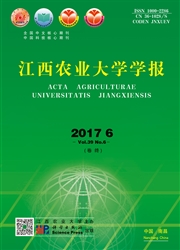

 中文摘要:
中文摘要:
人类活动是影响生物多样性重要因素,研究人类活动对生物多样性的影响对生物多样性保护具有重要意义。以鄱阳湖生态经济区为研究对象,从人口增长、农业活动、林业活动、经济活动、工程建设、保护活动等方面根据地区实际构建了评价指标体系,对区域内生物多样性与人类活动之间的关系性进行了研究。研究结果表明:1)区内生物多样性较为丰富,各县市区之间的差异也较大,生物多样性在空间分布上总体呈现由湖体向四周逐步降低的格局;2)人口增长因子中的人口密度、城市化率,经济活动中的人均GDP、农村人均纯收入,工程建设活动当中的建设用地比重,生态建设活动因子中的保护区面积这些指标与区域生物多样性呈显著相关性;3)采用逐步回归分析研究结果表明:城市化率、建设用地比重、人均GDP和保护区面积对鄱阳湖生态经济区区域生物多样性有显著影响,影响程度由大到小依次为城市化率、建设用地比重、保护区面积、人均GDP。说明人类活动对当地生物多样性造成的影响是显著的,保护与发展的矛盾依然很突出,区内林业活动和生态建设活动对生物多样性保护起到了积极作用。
 英文摘要:
英文摘要:
Human activities are important factors affecting biodiversity. Studies on the effects of human activities on biodiversity are of great significance for biodiversity protection. Taking Poyang Lake Eco-economic Region as the study area,20 indices from the aspects of population growth,agricultural and forestry activities,economic activity,project construction,protection were selected to study the association between human activity and biodiversity. The results show that 1) the biodiversity in the area is relatively abundant and reduces from the lake core area to the outskirt; 2) population density,urbanization rate,GDP per capita,net income,built-up area percentage,conservation area are significantly associated with regional biodiversity. The results of progressive regress indicate the order of the effects of human activities: urbanization rate〉 built-up area percentage〉 conservation area 〉GDP per capita. The effects of human activities on the regional biodiversity are significant.Thus the conflict between biodiversity conservation and development is still very serious. This study can provide reasonable suggestions on biodiversity conservation and management at the regional level.
 同期刊论文项目
同期刊论文项目
 同项目期刊论文
同项目期刊论文
 期刊信息
期刊信息
